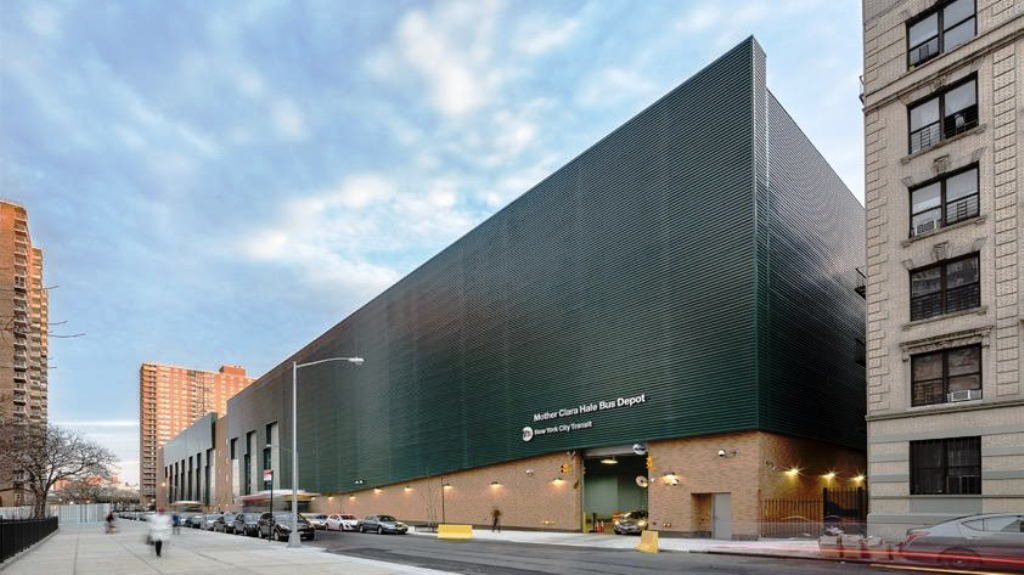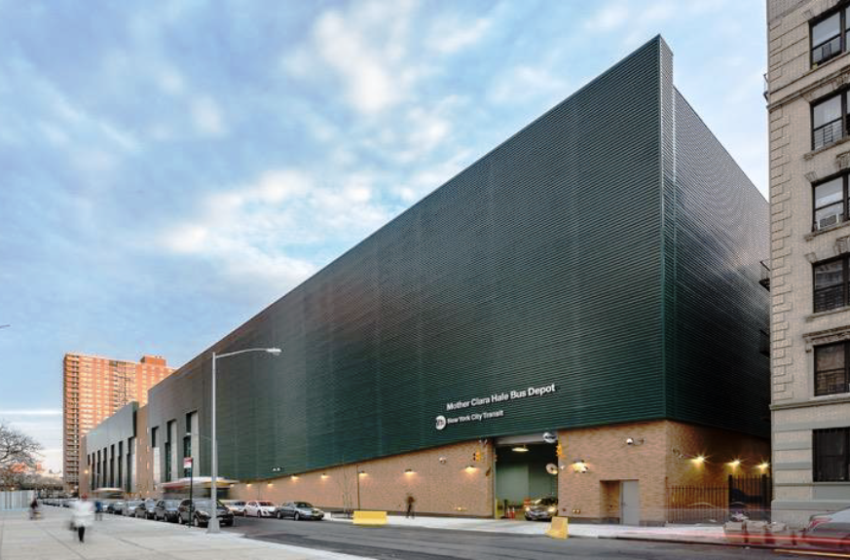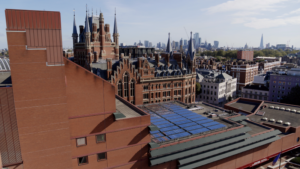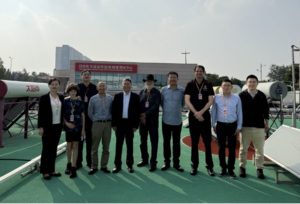

SWOT analysis of building-integrated solar systems
Which solar envelope systems are available for sale and what are their main features? A new report that is being drafted in Task 56 (Building Integrated Solar Envelope Systems for HVAC and Lighting) of the IEA Solar Heating and Cooling Programme will provide stakeholders with a comprehensive SWOT analysis of commercial and prototype solutions to shed some light on the diversity in this sector. Titled State-of-the-art and SWOT analysis of building integrated solar envelope systems, the document is scheduled for publication on the Task 56 website this August.
Photo: Conserval Engineering – Solarwall
The Task 56 report will contain a review of available solar envelope systems, describing the technical details of their facade integration and effects on thermal comfort and energy consumption in buildings. Its authors will also write about non-technical issues such as aesthetic features, architectural integration and customer acceptance. Even though the focus is on mass-market solutions, the report will likewise include a discussion of some custom-made and laboratory-scale products.
Solar envelope solutions will be categorised as
- Solar harvesting systems for electricity or heat production
- Solar systems for controlling daylight and incident solar radiation to lower a building’s energy needs
- Hybrid systems, which combine active and passive technologies
The report will describe eight solutions of the first category, four of which will be commercially available products, while the other four will be considered prototype systems.
| Solution | Technological readiness | More information |
| SolarWall heating systems | Commercial | http://solarwall.com/en/home.php |
| AventaSolar building-integrated collectors | Commercial | https://aventasolar.com |
| MatrixAir solar air heating | Commercial | http://www.matrixairheating.com |
| Kromatix – multi-coloured BIPV elements | Commercial | https://www.swissinso.com |
| SunRise – modular BI solar thermal system | Prototype | n/a |
| Modular BIPV/T | Prototype | n/a |
| HVAC via Facade: Facade element + integrated heat pump | Prototype | Report in German |
| BIPV/T prefabricated timber panels | Prototype | http://4rineu.eu |
Active solar envelope systems
Source: IEA SHC Task 56
The description of each solution has been written by the supplier of the technology, i.e., a research lab or a manufacturer. “We are sharing our analysis with other technology providers, so that we can offer a broader portfolio of solutions to building developers,” said Roberto Fedrizzi, Operating Agent of Task 56. Soon, parts of the report will be posted online to give manufacturers and providers the opportunity to add products, by sending an email to Fedrizzi, who is also the Coordinator of the Sustainable Heating and Cooling Systems research group at Eurac Research, based in Italy.
SWOT analysis
A SWOT analysis has been conducted regarding each solution described in the report, to identify strengths (S) and weaknesses (W), as well as opportunities (O) for growth and threats (T) created by external stimuli. Strengths and weaknesses are factors that are closely linked to a product and can be controlled by the developers. By contrast, opportunities and threats are external factors which affect the entire industry and are outside the influence of technology developers and suppliers.
SWOT, therefore, is a product analysis method, whose aim is to increase awareness of potential and critical issues that could have an impact on the success of a product in the market and help with strategic portfolio management. SWOT analysis results in strategies that build on strengths and avoid weaknesses, to seek out opportunities and counter threat

Building-integrated AventaSolar combi system on passive houses in Oslo, Norway
Photo: Aventa Solar
High-performance polymers for building-integrated solar collectors
One commercially available product to be featured in the report is AventaSolar’s building-integrated solar collector, which supplies domestic hot water or space heating, or both. It includes a polymer absorber with a transparent cover. Available in different lengths, this modular unit replaces conventional roof or building envelope materials. The innovative concept uses high-performance polymers processed into twin-wall sheets. It was demonstrated as early as at the beginning of 2010.
STRENGTHS
|
WEAKNESSES
|
OPPORTUNITIES
|
THREATS
|
SWOT analysis of AventaSolar collectors
Source: IEA SHC Task 56

View of internal (left) and external (right) surface of Sunrise facade module installed inside test chamber at EUREC, Italy
Photo: Eurac Resaerch
Integrated product under development
Among the solutions at laboratory scale, one that is certainly worth mentioning is the Sunrise – Modular BI solar thermal system, developed and tested by Italian-based research organisation EURAC. It is a metal and glass curtain wall facade module that combines a solar thermal collector on the outside and a storage tank with a capacity of around 50 litres, as well as a radiant panel, on the inside. It uses solar-generated heat to meet demand for space heating and hot water and can provide heating and cooling energy for thermal comfort. The target market is the tertiary building sector, mainly offices.
STRENGHTS
|
WEAKNESSES
|
OPPORTUNITIES
|
THREATS
|
SWOT analysis of Sunrise system
Source: IEA SHC Task 56
Organisations mentioned in this article:
IEA SHC Task 56: http://task56.iea-shc.org/
AventaSolar: https://aventasolar.com/


